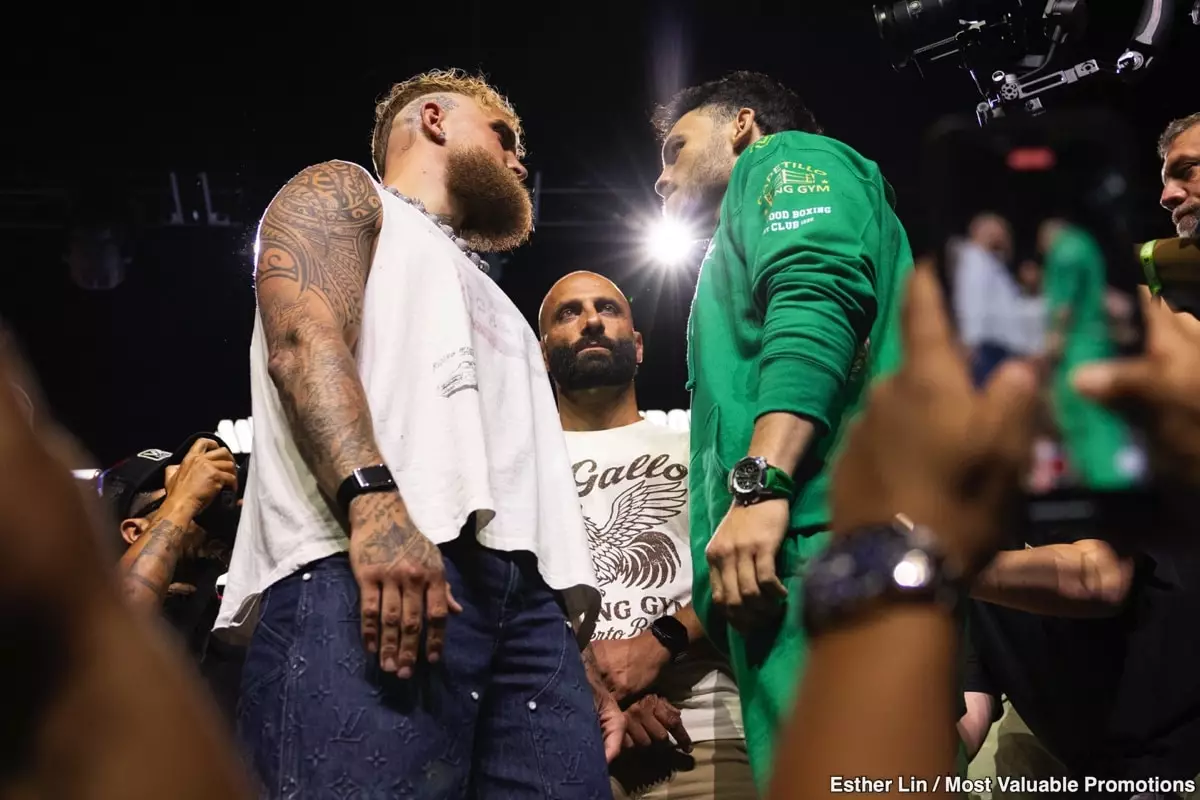Jake Paul’s entry into the professional boxing scene at the dawn of 2020 was met with skepticism, mockery, and curiosity in equal measure. A former YouTube celebrity attempting to transition into a sport laden with tradition and rigorous skill? The boxing world was divided—could he be more than a gimmick? Despite all doubts, five years later, Paul has undeniably left a mark on the sport, a mark that has stirred both excitement and controversy.
What makes Jake Paul’s rise fascinating is his dual role as both fighter and promoter. While his boxing skills are often debated, his ability to generate attention for the sport is indisputable. His bouts have found their way onto major platforms like Netflix—not once, but twice—demonstrating his knack for entertainment as much as competition. Paired with legendary figures like Mike Tyson, even if the fights themselves weren’t classic boxing spectacles, Paul has cleverly secured eyeballs and brought modern pop culture intersections to combat sports.
Strategic Matchmaking: Controversial but Effective
One of Paul’s most criticized yet successful strategies has been choosing opponents from other combat disciplines who were arguably past their prime. Fighters such as Anderson Silva, Nate Diaz, and Tyron Woodley—MMA veterans well-known within their own sport—were lured into the boxing ring with the promise of a lucrative payday and challenge. This tactical matchmaking grabbed the attention of MMA and boxing fans alike, creating a buzz that traditional boxing often longs for.
These opponents’ reputations served a dual purpose: they enhanced the spectacle and gave Paul a platform to showcase his evolving boxing skills. While purists emphasize that these fighters were “over the hill,” dismissing Paul’s victories outright feels shortsighted. Beating athletes of Silva, Diaz, and Woodley’s caliber—regardless of where they were in their careers—showcases Paul’s dedication to training and his ring IQ. However, the fight against Tommy Fury, a professional boxer with legitimate credentials, exposed Paul’s limitations in facing established boxing talent.
Facing a True Legacy: The Julio Cesar Chavez Jr. Bout
The upcoming match against Julio Cesar Chavez Jr. represents a critical test for Jake Paul. Chavez Jr., a former world champion and son of legendary Mexican boxer Julio Cesar Chavez Sr., carries a storied name and a challenging history. His recent performances—such as the split decision loss to Anderson Silva and a unimpressive victory over MMA fighter Uriah Hall—paint a complex picture. Chavez Jr.’s career has been marred by inconsistency, lifestyle distractions, and a questionable work ethic that have prevented him from fully capitalizing on his potential.
At 39 years old, Chavez Jr. is viewed by many as past his prime, but the question remains: how much ring rust and decline can be attributed to age versus diminished motivation? If he were still in his prime, few would doubt his ability to defeat Paul decisively. Yet, given the known factors, it is difficult to fully back him without reservations. Oddsmakers reflect this uncertainty through the betting lines, positioning Chavez Jr. as a substantial underdog despite his renowned pedigree.
What This Fight Reveals About Boxing’s Current State
This matchup symbolizes more than just two fighters entering the ring; it reflects the evolving face of boxing itself. Jake Paul is emblematic of a new wave—an influencer leveraging social media fame, entertainment value, and cross-sport hype to carve out a niche in the traditionally insular boxing world. His journey highlights how promoters now consider factors beyond pure skill, including celebrity allure and media savvy, to attract audiences.
Conversely, Chavez Jr. is a reminder of the old guard—fighters born into boxing dynasties, burdened by legacy, battling personal demons behind the scenes, and facing the harsh realities of aging in a physically demanding sport. The intrigue surrounding this fight hinges on how these contrasting narratives play out inside the ring.
A Personal Take: Betting on Potential Over Legacy
In analyzing this fight, I lean toward Jake Paul winning by decision. While not a knockout artist against seasoned boxers, Paul’s conditioning, strategic approach, and hunger give him a slight edge over an inconsistent Chavez Jr. who, despite experience, lacks the fire and focus he had in his younger days. This isn’t to say Paul is a boxing savant—far from it—but his rise underscores an important shift in how boxing matches are marketed and whom the sport considers a draw.
What remains essential is acknowledging Paul’s inadvertent role in pushing boxing into mainstream consciousness, attracting younger audiences who may otherwise shy away from the sport. Whether purists like it or not, Jake Paul’s presence is reshaping boxing’s cultural landscape in real-time, setting the stage for new kinds of matchups and promotional tactics.
Undercard Highlights and The Wider Card
Aside from the main event, the undercard also offers compelling bouts that deserve attention. The clash between Gilberto Ramirez and Yuniel Dorticos promises competitive action between established pros, while the pairing of Floyd Schofield and Tevin Farmer might hold smaller upsets with significant implications for their careers. These fights further illustrate the dynamic mix of young hopefuls and seasoned veterans populating boxing today’s ecosystem.
Overall, this fight card paints an intriguing picture of boxing’s current era—a blend of legacy names, transitory stars, and innovative promotional strategies vying for relevance and dominance within the sport.

